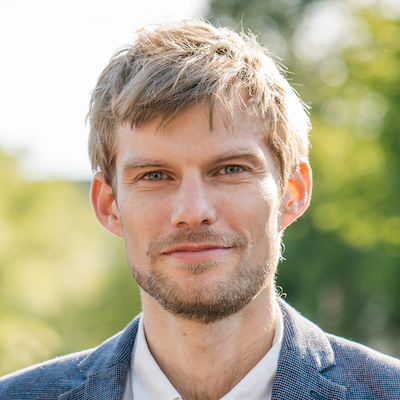Koen van Seijen of the Investing in Regenerative Agriculture podcast talks with John Kempf about the need for more capital to support the transition to regenerative agriculture — and what farmers should do with that money when it comes
John Kempf. Koen, tell us a little bit about your story and the scope of the work that you’re doing.

Koen van Seijen. I’m not a farmer. I was born in the city center of Rotterdam, which is a medium-sized city in the Netherlands. I was always interested in food, although not necessarily in agriculture, but over the years I started to look more into it. I was on the “slow food” side — I thought that if we would all just buy slightly better food, then everything would be fine.
But I vividly remember reading an article 12 or 13 years ago about holistic planned grazing in Australia. This was before Allan Savory was famous — before his TED Talk — and the article was about two people, Bruce Wade, a trainer of holistic planned grazing, and Tony Lovell, who was an accountant. They both are unfortunately no longer with us, but they talked about soil, they talked about grass, they talked about grazing, and they talked about carbon.
I really got hooked by that. I liked the numbers they were showing and the fact that food and agriculture could be part of the solution instead of just a smaller, “less dirty” part of the problem around climate change and biodiversity. That really triggered me. I reached out to Tony, and he was passing through Amsterdam because he was on his way to Denmark to raise money — this is where the money part comes in as well. At the end of the article, they mentioned that they didn’t just want to be consultants for farmers in transition, but they actually wanted to raise money to buy land, regenerate it and make a profit.
And from that moment on, I started following this space. Actually, the space didn’t really exist — but I started following the role of money in this transition. I got really interested in that and was very surprised that the financial sector — and this means family offices who manage money for large families, people who had recently sold companies, even people who won lotteries, etc. — why they weren’t considering food and agriculture that much. I’m not a big investor myself, and I’m not a farmer, but I wondered what my role in this space could be — what could I add?
So, I started recording interviews, or conversations, about this topic about six years ago. We talk with people who are doing things in regenerative agriculture and food, and we ask them everything — why, how, what they’re doing, what the barriers are, what the challenges are, etc.
Kempf. I think you deserve tremendous credit for your continuous curiosity and learning and for sharing those conversations. I would say your work has brought groups together probably three to five years earlier than what would’ve happened without your presence in this space. I think you’ve been successful in accelerating the conversation that much.
van Seijen. Thank you. But I think we’ve been extremely lucky in our timing. You see the world waking up to the potential. I think you’re absolutely right — this space is very young. But there are some serious family offices, some serious foundations, some serious institutional investors — banks, pension funds, insurance companies that manage large amounts of money — talking about regeneration and talking about regenerative agriculture. Is it the level we would like it to be at? Absolutely not. Is it a start? Yes. I remember 10 years ago talking to investors about soil, and you’d see their eyes look away. That has changed.
If you’re interested in health, if you’re interested in inequality, if you’re interested in the big questions around land ownership, if you’re interested in biodiversity, interested in chemicals, in fossil fuel or climate — you end up on soil at some point, and you start taking it more seriously.
Kempf. Your comment reminds me of the signature that Gail Fuller has on his email: “Soil is the answer. What was the question?”
I’d love to get your take from a big-picture perspective — what is the role that capital can play in facilitating the adoption of regenerative agriculture on scale? Where do we need capital? What are the things that farmers and agronomists should be thinking about and the impact that money can have on the landscape?
Support authors and subscribe to content
This is premium stuff. Subscribe to read the entire article.













